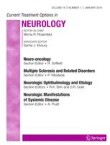Cerebral Edema in Traumatic Brain Injury: a Historical Framework for Current Therapy:

Abstract
Purpose of review
The purposes of this narrative review are to (1) summarize a contemporary view of cerebral edema pathophysiology, (2) present a synopsis of current management strategies in the context of their historical roots (many of which date back multiple centuries), and (3) discuss contributions of key molecular pathways to overlapping edema endophenotypes. This may facilitate identification of important therapeutic targets.
Recent findings
Cerebral edema and resultant intracranial hypertension are major contributors to morbidity and mortality following traumatic brain injury. Although Starling forces are physical drivers of edema based on differences in intravascular vs extracellular hydrostatic and oncotic pressures, the molecular pathophysiology underlying cerebral edema is complex and remains incompletely understood. Current management protocols are guided by intracranial pressure measurements, an imperfect proxy for cerebral edema. These include decompressive craniectomy, external ventricular drainage, hyperosmolar therapy, hypothermia, and sedation. Results of contemporary clinical trials assessing these treatments are summarized, with an emphasis on the gap between intermediate measures of edema and meaningful clinical outcomes. This is followed by a brief statement summarizing the most recent guidelines from the Brain Trauma Foundation (4th edition). While many molecular mechanisms and networks contributing to cerebral edema after TBI are still being elucidated, we highlight some promising molecular mechanism-based targets based on recent research including SUR1-TRPM4, NKCC1, AQP4, and AVP1.
Summary
This review outlines the origins of our understanding of cerebral edema, chronicles the history behind many current treatment approaches, and discusses promising molecular mechanism-based targeted treatments.





Δεν υπάρχουν σχόλια:
Δημοσίευση σχολίου